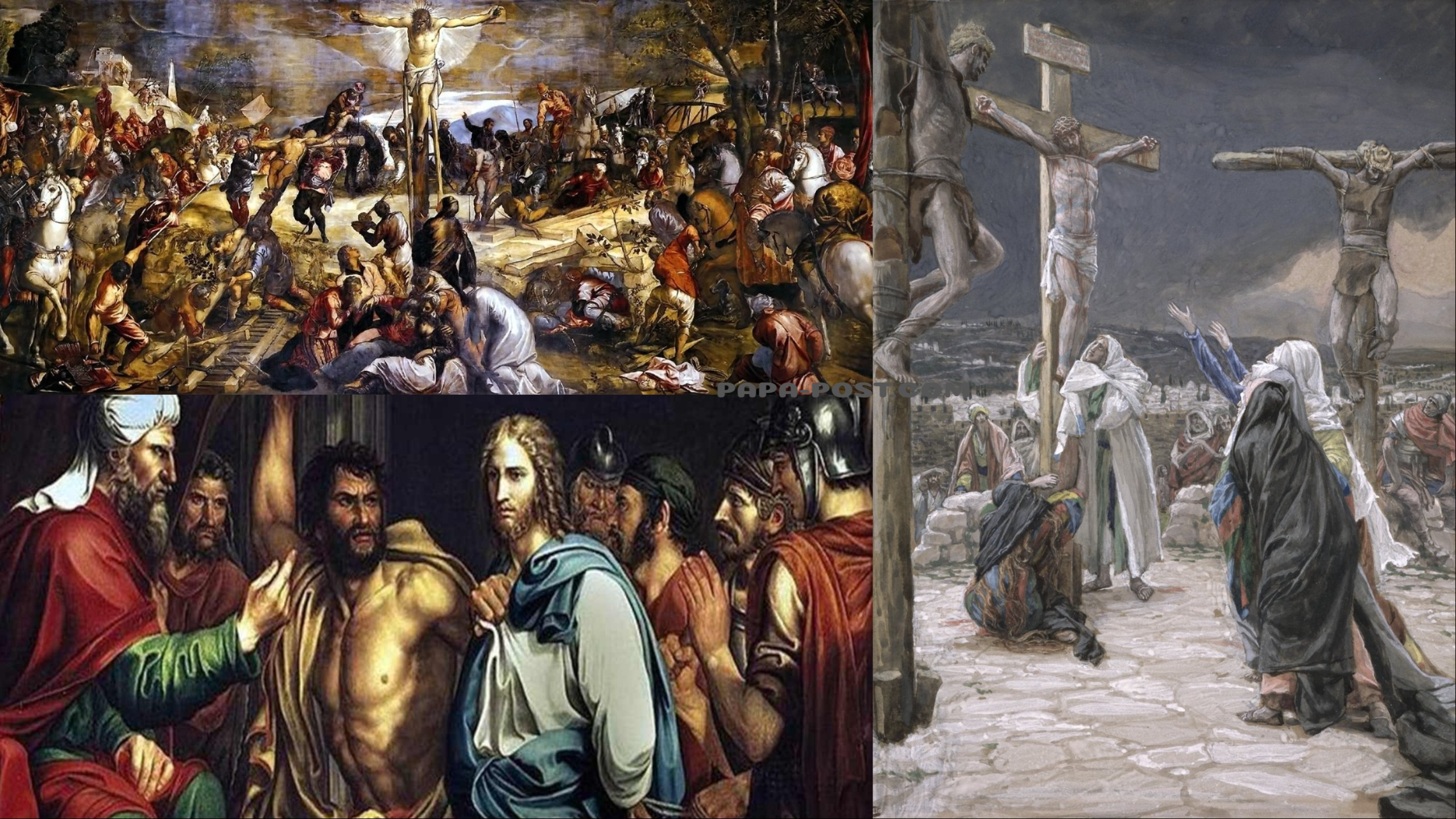1.Introduction
Few figures in human history have had an impact as profound and far-reaching as Jesus Christ. Revered as the Son of God by billions of Christians across the world and respected as a prophet or moral teacher by others, Jesus of Nazareth remains at the heart of theological discussion, historical investigation, and cultural reflection. His teachings have shaped the foundations of Western civilization, influenced global ethical frameworks, and inspired countless movements for justice, peace, and compassion.
The life and death of Jesus Christ form the cornerstone of Christian belief. According to Christian doctrine, Jesus is not only a historical figure but also the divine Savior, whose incarnation, crucifixion, and resurrection made possible the reconciliation between humanity and God. His story, recorded primarily in the New Testament of the Bible, transcends religious texts and enters into the broader conversations of philosophy, literature, art, and politics.
Born into a modest Jewish family under Roman rule, Jesus lived in a land marked by social inequality, political tension, and spiritual expectation. His three-year public ministry—marked by healing, teaching, and conflict with the religious authorities—culminated in a brutal execution by crucifixion. Yet, according to Christian faith, this apparent defeat was transformed into ultimate victory through His resurrection, affirming His divine identity and eternal purpose.
This article explores the life and death of Jesus Christ from multiple perspectives—biblical, historical, cultural, and theological. It traces His journey from birth in Bethlehem to His execution at Calvary and subsequent resurrection. In doing so, it examines why His life continues to resonate so powerfully across time and cultures, and why His death is considered, by many, not as a tragic end, but as the very gateway to eternal life.
2. Historical and Cultural Context
To fully understand the life and death of Jesus Christ, it is essential to consider the historical, cultural, and political context into which He was born. The backdrop of first-century Judea—a region steeped in religious tradition but under foreign occupation—shaped Jesus’ teachings, His challenges, and ultimately His crucifixion. This environment also helps explain the explosive growth of the Christian movement after His death.
2.1 The Roman Empire and Judea
During the time of Jesus, Judea was under the control of the Roman Empire. Rome’s vast territory extended across Europe, North Africa, and the Middle East, uniting diverse peoples under a centralized authority. In 63 BC, the Roman general Pompey annexed the region of Judea, placing it under Roman governance. By the time of Jesus’ birth, Herod the Great had been appointed “King of the Jews” by the Roman Senate, serving as a client king loyal to Rome.
Though Herod was known for his ambitious building projects, including the expansion of the Second Temple in Jerusalem, he was also infamous for his cruelty and paranoia. The Gospels of Matthew and Luke describe Herod as the ruler who, fearing the birth of a prophesied “King of the Jews,” ordered the massacre of infant boys in Bethlehem—a chilling reminder of the political instability and violence of the era.
After Herod’s death, his kingdom was divided among his sons. Pontius Pilate, a Roman prefect, later governed Judea during Jesus’ ministry and played a key role in His trial and execution.
2.2 Jewish Religious Life
First-century Jewish life was deeply religious, guided by adherence to the Law of Moses (Torah) and centered around the Temple in Jerusalem. The Jewish people lived with a profound sense of covenant identity—that they were God’s chosen people—and they observed festivals, dietary laws, Sabbath traditions, and purification rituals as expressions of this relationship.
However, within Judaism, several sects interpreted the Law and the hope of deliverance differently:
- The Pharisees emphasized strict observance of the Law and oral traditions.
- The Sadducees, often associated with the priestly elite, rejected many traditions outside the written Torah and maintained control over the Temple.
- The Essenes, a separatist group, lived in communal isolation and awaited divine intervention.
- The Zealots were radical nationalists who sought to overthrow Roman rule by force.
Jesus’ teachings often challenged the legalism of the Pharisees and the corruption of the Temple system, drawing sharp criticism from religious authorities. His emphasis on mercy, love, and inward transformation subverted many existing expectations about piety and righteousness.
2.3 Messianic Expectations
One of the most crucial elements of the Jewish cultural context was the widespread hope for a Messiah—an anointed king or deliverer who would liberate Israel from foreign domination and establish God’s kingdom. This expectation was rooted in the Hebrew Scriptures, particularly the prophetic books like Isaiah, Jeremiah, and Daniel.
However, interpretations of the Messiah varied:
- Some expected a military leader who would defeat the Romans.
- Others anticipated a spiritual or priestly figure who would restore proper worship.
- A few hoped for a heavenly deliverer who would usher in the final age.
Jesus’ arrival stirred deep questions about His identity. His miracles and teachings convinced many that He was the long-awaited Messiah. Yet His rejection of political power, His association with outcasts and sinners, and His ultimate crucifixion baffled many, including His closest followers.
2.4 Language, Culture, and Daily Life
The region of Galilee and Judea was culturally diverse. While Aramaic was the spoken language of daily life, Hebrew was used in religious contexts, and Greek served as the lingua franca of the broader Roman world. This multilingual environment contributed to the wide dissemination of Jesus’ teachings after His death, especially through the Greek writings of the New Testament.
Most people in Jesus’ time lived agrarian lives—fishing, farming, or practicing trades like carpentry. Jesus Himself, the son of a carpenter, lived in Nazareth, a small, relatively obscure town. This background made His wisdom and authority all the more astonishing to those who heard Him teach.
2.5 Political Tensions and Roman Rule
Roman rule brought peace (the “Pax Romana”) but also heavy taxation, forced labor, and brutal enforcement of law and order. Crucifixion, the method used to execute Jesus, was a Roman form of capital punishment reserved for slaves, rebels, and the most despised criminals. It served not just as punishment but as public deterrence.
Within this charged atmosphere, any figure gathering large crowds, claiming spiritual authority, or speaking of a new “kingdom” could be seen as a threat. Jesus’ message about the “Kingdom of God” was not a call to arms, but its political implications—especially His popularity with the masses—alarmed both Roman officials and Jewish leaders.
3. The Birth of Jesus
The birth of Jesus Christ is one of the most well-known and celebrated events in history, commemorated annually by Christians around the world during the Christmas season. Though often retold with a blend of biblical and traditional imagery, the scriptural accounts in the Gospels of Matthew and Luke provide the foundation for Christian beliefs about the incarnation of the Son of God.
3.1 The Virgin Birth
According to the Gospel accounts, Jesus’ birth was miraculous. In Matthew 1:18–25 and Luke 1:26–38, both writers assert that Mary, a young Jewish woman betrothed to Joseph, conceived Jesus not through natural means, but by the Holy Spirit. This event, known as the Virgin Birth, is foundational to Christian theology, affirming that Jesus was both fully human and fully divine.
The angel Gabriel’s announcement to Mary (the “Annunciation”) marks a pivotal moment: she is told she will bear a son and name Him Jesus, which means “Yahweh saves.” Gabriel declares that her child will be called the “Son of the Most High” and that His kingdom will never end—echoing messianic prophecies from the Hebrew Scriptures.
Joseph, initially troubled by Mary’s unexpected pregnancy, is reassured in a dream that the child is from God. Obediently, he accepts his role as Jesus’ earthly father, providing protection and legitimacy within their Jewish community.
3.2 Prophecies Fulfilled
The Gospel writers present Jesus’ birth as the fulfillment of ancient prophecies. Matthew, in particular, frequently quotes the Hebrew Scriptures to show that Jesus’ coming was anticipated centuries before. For example:
- Isaiah 7:14 speaks of a virgin bearing a son called “Immanuel,” meaning “God with us.”
- Micah 5:2 foretells that the Messiah would be born in Bethlehem, the City of David.
By framing Jesus’ birth as the culmination of divine promises, the Gospel authors situate Him firmly within the larger story of God’s redemptive plan for Israel—and, ultimately, the world.
3.3 The Journey to Bethlehem and the Nativity
The Gospel of Luke recounts that Mary and Joseph traveled from Nazareth to Bethlehem due to a Roman census decreed by Caesar Augustus. This journey—about 70 miles—would have been arduous, especially for a pregnant woman. When they arrived, they found no lodging and were forced to take shelter in a stable or cave, where Mary gave birth to Jesus and laid Him in a manger (Luke 2:1–7).
The humility of Jesus’ birth—born in obscurity and poverty, attended only by animals and shepherds—emphasizes a central theme of His life: God entering the world not in royal splendor, but in vulnerable humanity.
3.4 The Visit of the Magi and Herod’s Reaction
Matthew’s Gospel recounts the visit of the Magi (wise men) from the East who, guided by a star, came to honor the newborn “King of the Jews” with gifts of gold, frankincense, and myrrh. Their visit highlights the international significance of Jesus’ birth and is seen as a foreshadowing of His global impact.
King Herod, upon hearing of the child’s birth, was deeply disturbed. Fearing a challenge to his rule, he ordered the massacre of all male children under two years old in Bethlehem—a horrific event known as the Massacre of the Innocents. Warned in a dream, Joseph fled with Mary and Jesus to Egypt, fulfilling another prophecy (Hosea 11:1) and preserving the child from harm.
3.5 Symbolism and Theological Meaning
Jesus’ birth narrative is rich in symbolism:
- His lowly surroundings reflect His mission to identify with the poor and the marginalized.
- The manger scene emphasizes humility over power.
- The angelic announcements to shepherds highlight that God’s message is for all people—not just the elite.
Theologically, the birth of Jesus represents God’s incarnation—the infinite becoming finite, the divine entering into human history. This mystery is celebrated in Christian doctrine as the beginning of the path toward redemption, culminating in Jesus’ death and resurrection.
4. The Early Life and Preparation
Though the Gospels give only brief glimpses into Jesus’ early life, the few accounts we do have reveal key aspects of His character, identity, and divine mission. The “hidden years” between His birth and the beginning of His public ministry are largely unexplored in the New Testament, but the limited narratives offer profound insights into His preparation for the role He would ultimately fulfill.
4.1 Life in Nazareth
After returning from Egypt to avoid Herod’s wrath, Joseph and Mary settled in Nazareth, a small, rural village in Galilee. Jesus spent the majority of His formative years there, living a humble life in a tight-knit Jewish community. According to Luke 2:40, “The child grew and became strong; he was filled with wisdom, and the grace of God was on him.”
Nazareth held no special religious significance at the time. In fact, it had a poor reputation, prompting Nathanael (in John 1:46) to ask skeptically, “Can anything good come out of Nazareth?” This background would later contrast sharply with the grandeur people expected from the Messiah.
Joseph, a carpenter (or possibly a builder or stonemason, based on the Greek word tekton), likely taught Jesus his trade. This period of ordinary labor and family life further emphasizes the incarnation—God entering into the common human experience.
4.2 The Visit to the Temple at Age Twelve
One of the only detailed stories from Jesus’ youth occurs in Luke 2:41–52. At the age of twelve, Jesus traveled with His parents to Jerusalem for the Passover festival, a common custom for Jewish families. However, when the festival ended, Jesus stayed behind in the Temple without informing His parents.
After three days of searching, Mary and Joseph found Him sitting among the teachers, listening to them and asking questions. Everyone who heard Him was astonished at His understanding and answers. When questioned by His worried mother, Jesus replied, “Didn’t you know I had to be in my Father’s house?” (Luke 2:49). This marks His first recorded acknowledgment of His divine identity and purpose.
The passage concludes with Jesus returning to Nazareth and being obedient to His parents, growing in wisdom, stature, and favor with both God and people. This brief story highlights the tension between His divine mission and His human upbringing.
4.3 The Baptism by John the Baptist
Around the age of 30, Jesus left His quiet life in Nazareth and traveled to the Jordan River to be baptized by John the Baptist, a prophetic figure calling people to repentance and preparing the way for the coming Messiah.
Though sinless, Jesus chose to be baptized “to fulfill all righteousness” (Matthew 3:15), identifying with humanity’s need for repentance and inaugurating His public ministry. As He emerged from the water, the heavens opened, the Holy Spirit descended on Him like a dove, and a voice from heaven declared, “This is my beloved Son, in whom I am well pleased” (Matthew 3:17).
This event is pivotal—it publicly affirms Jesus’ divine identity, introduces the concept of the Trinity (Father, Son, and Holy Spirit acting together), and marks the beginning of His messianic mission.
4.4 The Temptation in the Wilderness
Immediately after His baptism, Jesus was led by the Spirit into the wilderness, where He fasted for forty days and was tempted by the devil (Matthew 4:1–11, Luke 4:1–13).
Satan presented three temptations:
- Turning stones into bread – appealing to physical hunger and self-gratification.
- Jumping from the Temple to force God’s protection – testing divine authority.
- Worshiping Satan to gain worldly power – bypassing suffering for easy glory.
In each case, Jesus resisted by quoting Scripture, demonstrating His obedience to the Father, mastery of the Word, and rejection of worldly power. This trial served as a spiritual proving ground, preparing Him for the challenges of His ministry and foreshadowing the ultimate temptation to avoid suffering on the cross.
5. The Public Ministry of Jesus
The public ministry of Jesus Christ, which lasted approximately three years, is one of the most transformative and well-documented periods in religious history. It began after His baptism and temptation and unfolded across towns and villages of Galilee, Judea, and Jerusalem. During this time, Jesus preached, taught, healed, and challenged the religious and social norms of the day. His ministry was marked by both widespread admiration and growing opposition, culminating in His crucifixion.
5.1 The Call of the Disciples
Jesus began His ministry by calling a group of ordinary men to follow Him. These disciples, including fishermen like Peter, Andrew, James, and John, left their livelihoods to become His closest companions and future apostles. In total, He chose twelve apostles, symbolizing the twelve tribes of Israel and the renewal of God’s covenant community.
This group was diverse—ranging from tax collectors like Matthew (seen as traitors by fellow Jews) to political zealots like Simon the Zealot—highlighting Jesus’ ability to unite people from all walks of life under a common purpose.
Jesus trained them not only by teaching but by example—through acts of service, compassion, and devotion to the will of God.
5.2 Teachings and Parables
At the heart of Jesus’ ministry was His teaching about the Kingdom of God. He spoke with unparalleled authority, captivating crowds and challenging the prevailing religious traditions. Unlike the legalistic focus of many religious leaders of His time, Jesus emphasized:
- Love of God and neighbor as the greatest commandments
- Mercy, forgiveness, and humility over rigid rule-keeping
- Inner purity over external religious observance
- The inclusion of outcasts, such as lepers, prostitutes, and tax collectors
He often taught in parables—simple yet profound stories with deep spiritual meaning. These included:
- The Parable of the Good Samaritan – emphasizing compassion beyond cultural boundaries
- The Parable of the Prodigal Son – showcasing God’s mercy toward repentant sinners
- The Parable of the Sower – illustrating responses to the message of the Kingdom
- The Parable of the Mustard Seed – showing how the Kingdom starts small but grows immensely
Parables invited reflection and revealed truths to those open to understanding, while also concealing meaning from hardened hearts (Matthew 13:10–17).
5.3 Miracles and Signs
Jesus’ ministry was also marked by a series of miracles—acts that demonstrated divine power and authenticated His identity. These included:
- Healing the sick – blind, deaf, paralyzed, leprous, demon-possessed
- Raising the dead – such as Lazarus, the widow’s son in Nain, and Jairus’ daughter
- Feeding the multitudes – including the feeding of 5,000 with five loaves and two fish
- Calming storms and walking on water – demonstrating authority over nature
- Turning water into wine – His first recorded miracle at the wedding in Cana
These acts were not merely demonstrations of power but signs pointing to the nature of the Kingdom—one of restoration, wholeness, and life. They revealed Jesus as the Messiah, foretold in the Old Testament, who would bring healing to a broken world.
5.4 Conflict with Religious Authorities
As His influence grew, so did opposition—especially from the Pharisees, Sadducees, and other religious leaders. Jesus accused them of hypocrisy, legalism, and neglecting the heart of God’s law. In return, they accused Him of blasphemy, violating Sabbath laws, and misleading the people.
Key sources of conflict included:
- Healing on the Sabbath – seen as work forbidden by the Law
- Associating with sinners – violating purity expectations
- Forgiving sins – which only God could do
- Cleansing the Temple – a bold act of judgment against religious corruption
The cleansing of the Temple (Matthew 21:12–13) was especially provocative: Jesus drove out money changers, accusing them of turning God’s house into a “den of robbers.” This event intensified the plot to kill Him.
Jesus’ challenges weren’t only legal or theological—they were deeply political. His claim to speak for God, coupled with His massive following, threatened the established order, both religious and Roman.
5.5 Inclusion of the Marginalized
A hallmark of Jesus’ ministry was His radical inclusion of those excluded by society. He healed lepers (considered unclean), spoke with women (in a patriarchal culture), ate with tax collectors and sinners, and lifted up children as models of the Kingdom.
He crossed ethnic and social boundaries, ministering to:
- Samaritans, like the woman at the well (John 4)
- Gentiles, such as the Roman centurion whose faith amazed Him
- Women, who supported His ministry and were the first witnesses of His resurrection
- The poor and oppressed, whom He called “blessed” in the Beatitudes
This inclusion revealed the universal scope of His mission and offered a radically different vision of God’s love—one not limited by race, gender, class, or religion.
5.6 The Message of the Kingdom
Central to everything Jesus said and did was the proclamation of the Kingdom of God—not a political regime, but a spiritual reality marked by justice, peace, love, and the reign of God over all creation.
This Kingdom:
- Is present and future – “already but not yet”
- Requires repentance and faith
- Grows mysteriously and often begins unnoticed
- Belongs to the poor in spirit, the meek, and the persecuted
Jesus invited people not just to believe in Him, but to follow Him—to take up their crosses, love their enemies, forgive seventy times seven, and store up treasures in heaven. His message was not one of mere religion, but of total transformation.
6. The Passion and Crucifixion
The Passion of Jesus refers to the suffering and death He endured in the final days of His earthly life. This period, which begins with His triumphant entry into Jerusalem and culminates in His crucifixion, forms the emotional and theological climax of the Gospel narratives. It is through this suffering that Christians believe Jesus fulfilled His divine mission—offering Himself as the sacrificial Lamb to atone for the sins of the world.
6.1 The Triumphal Entry
Jesus’ entry into Jerusalem marks the beginning of what is now called Holy Week. Riding a donkey, He entered the city amid crowds shouting “Hosanna!” and laying down palm branches (Matthew 21:1–11). This fulfilled the prophecy from Zechariah 9:9, which described a humble king entering Jerusalem to bring peace.
The moment was filled with messianic expectation, as people hailed Him as the “Son of David,” the royal figure expected to deliver Israel. Yet, Jesus’ choice of a donkey—not a warhorse—signaled a kingdom of peace, not military conquest. This paradox of kingship would define the days to come.
6.2 The Last Supper
As tensions mounted, Jesus gathered with His disciples in an upper room to celebrate the Passover meal—an annual Jewish feast commemorating Israel’s deliverance from slavery in Egypt.
During this Last Supper (Matthew 26, Mark 14, Luke 22), Jesus instituted the Eucharist, or Communion. He broke bread and shared wine, declaring them to be His body and blood, “given for you” and “poured out for many for the forgiveness of sins.” This symbolic act would become central to Christian worship, commemorating His sacrificial death and the new covenant between God and humanity.
He also foretold His betrayal by one of the Twelve and Peter’s impending denial. Despite their protests, Jesus knew the events of the Passion were now inevitable.
6.3 The Garden of Gethsemane
After supper, Jesus went to the Garden of Gethsemane to pray. In a moment of profound anguish, He asked the Father to “let this cup pass from me,” yet ultimately submitted: “Not my will, but yours be done” (Luke 22:42).
This scene reveals both Jesus’ humanity and divinity. He faced the terror of impending torture and death, yet chose obedience out of love for God and humanity. As His disciples slept nearby, Jesus wrestled alone with the weight of the world’s sin and the sorrow of betrayal.
6.4 Betrayal and Arrest
Shortly after, Judas Iscariot, one of Jesus’ closest disciples, arrived with armed temple guards and betrayed Jesus with a kiss—a prearranged signal (Matthew 26:47–56). Jesus was arrested and taken away, while His disciples fled in fear.
This betrayal fulfilled several Old Testament prophecies, including Psalm 41:9: “Even my close friend, someone I trusted, one who shared my bread, has turned against me.”
6.5 Trials Before the Sanhedrin and Pilate
Jesus was subjected to a series of unjust trials:
- First, before the Sanhedrin, the Jewish council. He was accused of blasphemy for claiming to be the Son of God.
- Then, before Pontius Pilate, the Roman governor, since the Jews lacked the authority to carry out capital punishment.
Though Pilate found no fault in Him, he caved to public pressure. In a symbolic gesture, he washed his hands, declaring himself innocent of Jesus’ blood (Matthew 27:24). The crowd, stirred by religious leaders, cried out, “Crucify Him!”
In a final act of mockery, Pilate offered the people a choice between releasing Jesus or Barabbas, a known criminal. They chose Barabbas.
6.6 The Crucifixion
Jesus was brutally scourged, mocked with a crown of thorns, and forced to carry His cross to Golgotha, meaning “the place of the skull.” There, He was crucified between two criminals—a humiliating and excruciating form of Roman execution.
The Gospels recount several powerful moments from the cross:
- Jesus prayed for His executioners: “Father, forgive them, for they do not know what they are doing” (Luke 23:34).
- He assured one of the criminals: “Today you will be with me in paradise” (Luke 23:43).
- He cried out in agony: “My God, my God, why have you forsaken me?” (Matthew 27:46), quoting Psalm 22, expressing both deep pain and ultimate trust.
- Finally, He declared, “It is finished” (John 19:30), signifying the completion of His redemptive work, and surrendered His spirit.
At the moment of His death, the temple veil was torn in two, symbolizing that access to God was no longer mediated by the temple priesthood but now open through Christ.
Darkness fell over the land, and even the Roman centurion exclaimed, “Surely this was the Son of God!” (Mark 15:39).
6.7 The Burial
Jesus’ body was taken down from the cross by Joseph of Arimathea, a member of the Sanhedrin who had secretly believed in Him. With the help of Nicodemus, they wrapped His body in linen and laid Him in a tomb carved out of rock, sealed with a large stone.
Roman guards were stationed outside, and the tomb was officially sealed to prevent any tampering, as authorities feared Jesus’ disciples might claim He had risen.
6.8 Theological Significance of the Crucifixion
The crucifixion of Jesus is the central event of Christian theology. According to the New Testament:
- Jesus was the sinless Lamb of God who bore the penalty for the sins of humanity (John 1:29).
- Through His death, He fulfilled the Old Testament sacrificial system, becoming the ultimate atonement (Hebrews 10:10–14).
- His death reconciles humanity to God, breaking the power of sin and death (Romans 5:8–11).
- It reveals the depth of God’s love, offering salvation to all who believe (John 3:16).
Unlike a mere martyrdom, Jesus’ crucifixion is seen as a divine transaction, a purposeful sacrifice made out of obedience and love. The cross, once a symbol of shame, has become the most enduring symbol of hope in Christian faith.





